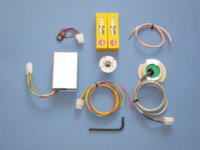OK, I'm a curmudgeon, but comparisons of the XS650 to the Triumph Bonneville make me cringe. From where I sit the machines are not similar in any way except for having 2 wheels, 2 cylinders, and a 360* firing order.
Let's get down to basics. Weight: The stock XS650D is nearly 100 lbs. heavier than the 650 Triumph Bonnie. If you think that doesn't affect handling, you've never put your Yamaha on a diet and slimmed the fat b____ down. Forks and shocks: First class Girling dampers on the Trunch. On the Yamaha, good enough to hold the bike up off the tires. Steering: Dead linear on the Triumph, pronounced oversteer at deep heel on the Yamaha, due chiefly to top heaviness.The list could go on, but the bottom line on handling is that the Trunch would dance right out of the box and the Yamaha needs a lot of time and money to achieve anything close.
But in design and construction of the engine and electrics, the Yamaha completely outclasses the Triumph. Triumph: pushrod valve train with external pushrod towers sealed with O-rings. Usual service interval between valve jobs (and I mean cut-and-lap, kiddies, not lash adjustment): ~20K miles if you were lucky. Chain type primary drive. Weepy engine covers due to shoddy fit and finish. Electrics by the Lord of Darkness. And very frequent tuneup sessions to keep the beast running well enough to justify giving it a home in spite of its evil ways.The Yamaha may look like a high maintenance machine compared to modern designs, but AFAIK the only motorcycles from the period that asked for less maintenance were the /2 series BMWs. I've always wondered why Yamaha and the other Japanese makers could outclass the Americans, Brits, and Italians in engine, drive train, and electrical system quality, but wouldn't give equal attention to frames, brakes, dampers, and bulk.


